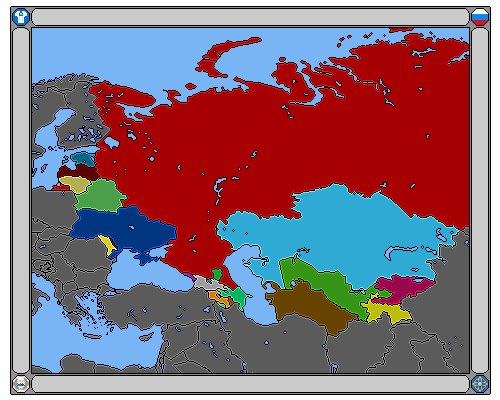HOME | DD
 BonesRobert — The State of Yugoslavia, Map
BonesRobert — The State of Yugoslavia, Map

#90s #borders #bosnia #croatia #kosovo #macedonia #map #maps #montenegro #serbia #slovenia #war #yugoslavia #historical #pixelart #mapsandflags
Published: 2023-12-30 09:23:34 +0000 UTC; Views: 2994; Favourites: 13; Downloads: 2
Redirect to original
Description
--------------------------------Happy New Years Everyone
--------------------------------
1990: The Socialist Federal Republic of Yugoslavia or the SFRY, was made up of six socialist republics which included Slovenia, Croatia, Bosnia, Serbia, Montenegro, and Macedonia. In August, the Log Revolution would occur in the SR Croatia where Serb militias under the leadership of Milan Martić and Milan Babić established the Serbian Autonomous Oblast of Krajina. In December, Slovenia held their referendum for independence, in which the vast majority of people voted for independence.
1991: In June, Croatia held an independence referendum and like in Slovenia saw the majority of people supporting independence. So on June 25th, both Slovenia and Croatia declared their independence whereby the JNA (Yugoslav People’s Army) would attempt to take control of Slovenia. Fighting in Slovenia lasted only ten days with Slovenia victorious and the JNA withdrawing to focus their efforts in the Croatian War for Independence. In September, Macedonia held their referendum of independence and with the results voting yes Macedonia declared their independence on the same day. In response to the Croats referendum, the SAO of Krajina proclaimed itself as the Republic of Serbian Krajina, seeking to stay with Yugoslavia. By the end of the year, Vukovar was captured by Serb Forces and would join the Republic of Serbian Krajina. A community of Croats in Bosnia forms the Croatian Community of Herzeg-Bosnia.
1993: Since 1992, the Republika Srpska was proclaimed in January within the SR Bosnia. SR Bosnia had held a referendum where turnout was made up of Bosniaks and Croats with both groups voting in favor of independence. Bosnia declared independence on March 3, 1992 and a month later the Bosnian War started after a series of clashes and attacks throughout the region. In April of 1992, the SFR Yugoslavia had officially dissolved and was succeeded by the Federal Republic of Yugoslavia. The Croat-Bosniak War ignited in October of 1992 as a result of disagreements between the HVO (Croatian Defence Council of Herzeg-Bosnia) and the Bosnian forces. In August of 1993, Western Bosnia declared their autonomy from Bosnia and worked along with Serbian Krajina and Republika Srpska in fighting against the Bosnian controlled city of Bihać.
1995: Following the end of the Croat-Bosniak War in 94, both Bosniak and Croat forces agreed to be allies once again to combat the Serb forces. On August 4th, Operation Storm was commenced by the Croat Army causing a majority of Serbian Krajina to be under the control of Croatia. Serbian Krajina would collapse as the last remaining part would be formed into the rump state of Eastern Slavonia. This campaign in turn also led to the end of Western Bosnia as Croat troops lifted the siege, helping the Bosniak forces encircled there. With the success of the operation, several other operations were executed allowing both Bosnian and Croat forces to capture and secure multiple towns in Bosnia. Meanwhile on August 30th, NATO executed Operation Deliberate Force in response to a second massacre at the Markale Market in Sarajevo by Bosnian Serb forces. The Bosnian War would come to an end with the signing of the Dayton Agreement on December 14th.
1999: With the insurgency in Kosovo intensified to an all out war between the Yugoslav forces and the Kosovo Liberation Army (UÇK). NATO launched a bombing campaign on Yugoslavia in March on the grounds of humanitarian intervention. As a result of the bombing, Yugoslavia agreed to the Kumanovo Agreement where Yugoslav forces would withdraw from Kosovo, KFOR would conduct peacekeeping missions in the region, and Kosovo becoming a UN mandate (UNMIK). Although the KLA would be disbanded in accordance with peace in Kosovo, former members of the UÇK would form the UÇPMB. The UÇPMB would attempt to capture and control the areas of Preševo, Bujanovac, and Medveđa and incorporate them into Kosovo.
2023: With the FR Yugoslavia officially dissolved in 2003, it was succeeded by the confederation of Serbia and Montenegro. On June 3rd of 2006, Montenegro seceded and declared independence. Later on June 5th, Serbia too declared its independence. In February of 2008, Kosovo declared its independence from Serbia, in response the Serbian government condemned the declaration and Serbs across Serbia, Bosnia, Montenegro, and in Kosovo protested.


























